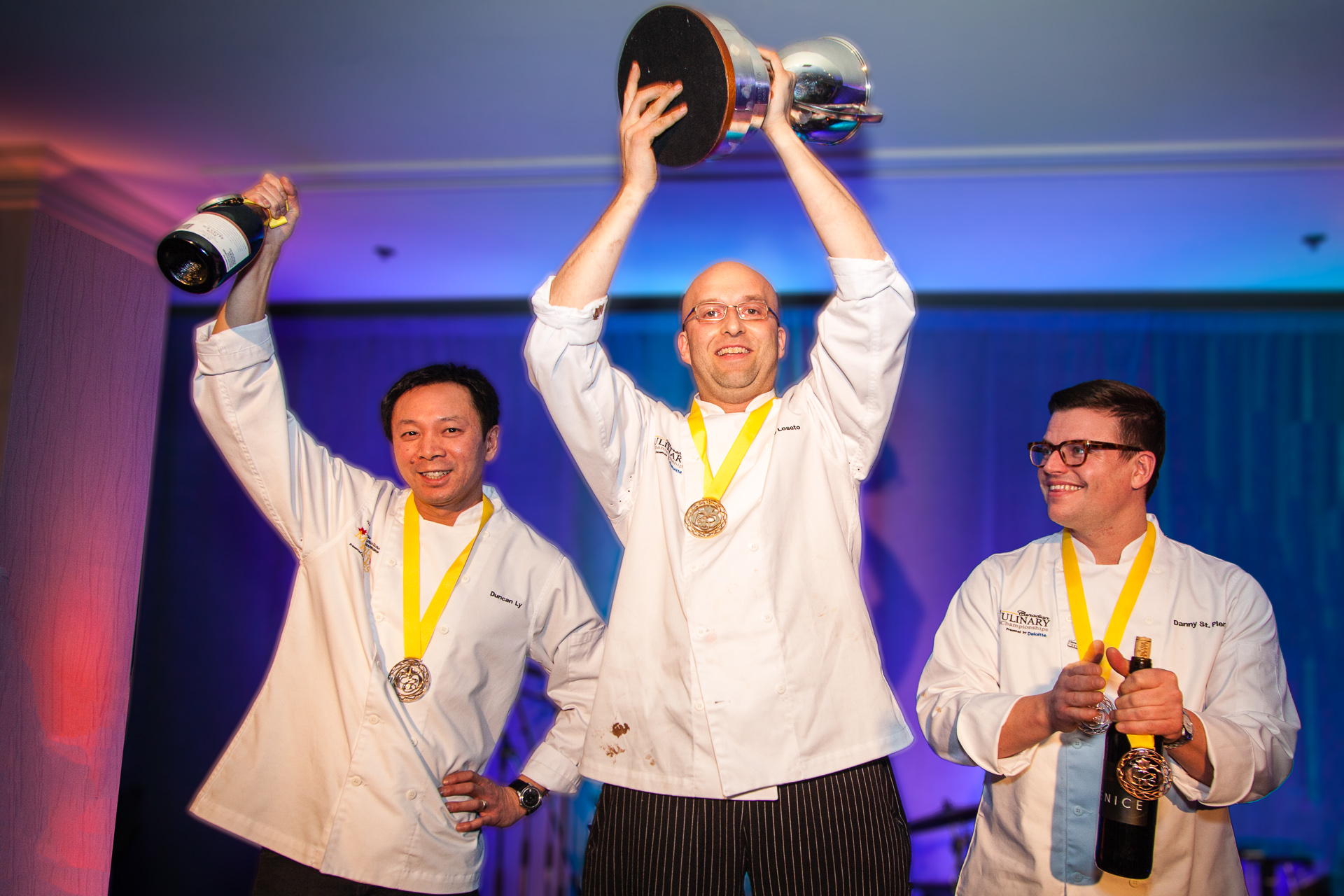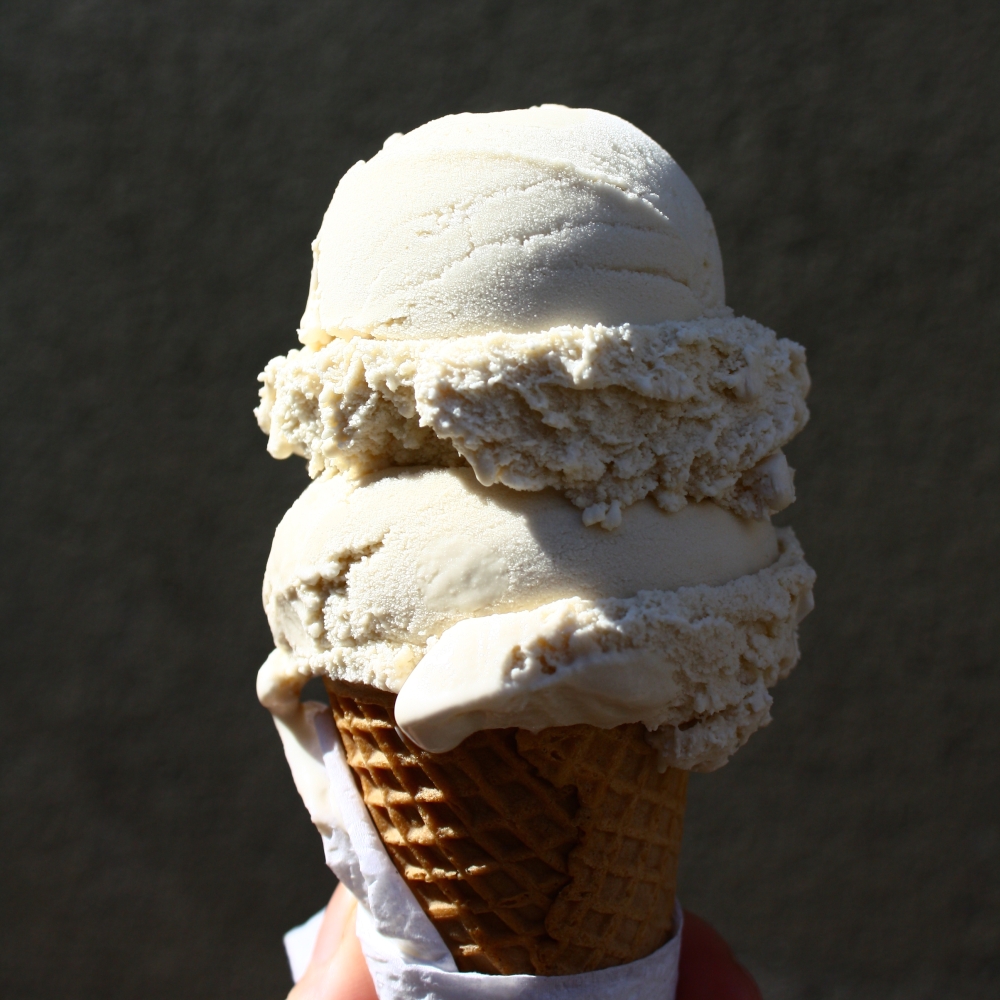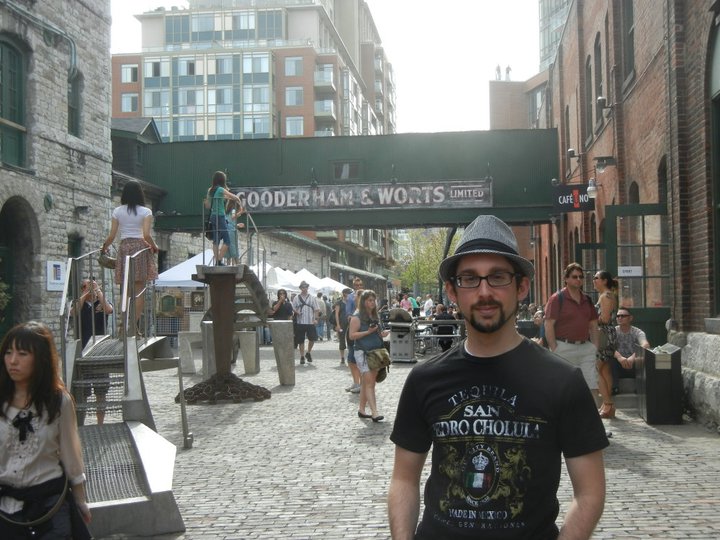How was the Canadian Championship different from the Ontario Championship which you won last year?
The Championship included three events rather than one here in Ontario. In the first event a mystery bottle of wine was revealed and we were asked to compose a dish to pair with it. The catch was that we had a limited budget and we had to shop for everything ourselves the morning of. The wine itself was Laughing Stock’s 2012 Blind Trust from B.C.’s Naramata Bench. It’s an aromatic wine with a hint of oak, green apple and bright acidity, which worked well with my style of food. I paired it with a goat cheese mousse with beets, apple and bacon.
For the second challenge, we were given a black box of ingredients and asked to create two dishes in one hour. The black box items were: heritage chicken, trout, lion’s mane mushroom, preserved cherries, parsnips and honey butter. All the ingredients were locally sourced. For my first dish, I made a trout ceviche with preserved cherries, roasted parsnip and chimichurri mayo. My second dish was a sesame/soya chicken breast with honey butter potato pave and lion’s main gremolata.
The third challenge was the grand gala. For this event I could do anything I wanted. I chose to recreate our winning dish from Toronto; potato-wrapped tuna, carrot and pear, paired with a fantastic 2010 Old Vine Riesling from Kew Vineyards in Niagara.
The timing of this Championship was really exciting. The proceeds from Gold Medal Plates go to help Canadian Olympic athletes, so it was really fun that we were competing at the same time that the Olympics opened. We all felt a connection that we were contributing to Canada’s 2014 team effort.
Were you able to prepare for Kelowna?
The only portion of the competition that I could really 100% prepare for was the gala event. I was able to organize and ship a lot of the ingredients from Toronto to ensure no compromises were made. That however became a bit of a logistical nightmare, as we shipped 60 lbs of tuna and other perishable items to get to Kelowna in precise time and in perfect condition.
With the other challenges it was tough to prepare. I touched based with 2013 winner Marc St.Jaques of Auberge Du Pommier and I did some homework on the city’s grocery stores, fish mongers and butchers. I also brushed up on my rusty wine pairing skills with help from our Sommelier, Ian Threshor.
Why do you think that you succeeded at Kelowna?
After competing in Ontario’s Gold Medal Plates for eight years, I was focused and I was prepared for anything. There were a lot of things that could have gone wrong but didn’t and everything that could have gone right did. Not sure if that was just being very lucky or very skillful – maybe it was a bit of both.
Even in winning though I felt we could have done better, it was too close for my liking.
What were the other chefs like and did they all get along?
The other chefs were great. Everyone got along and helped each other. There were some amazing dishes. It was hard for me to look at their plates – it made me nervous seeing how nice the food was so I stopped looking and focused on my dishes.
What worked to your benefit in the competition?
I think my style of food was very compatible with the judges’ palates. What I try for is complexity, but also very light and fresh food with a refined finish.
How do you think Canadian chefs stack up against chefs from other countries?
I think Canadian chefs are underrated and definitely stack up quite well.
Canadian chefs are definitely more conservative compared to some of the international chefs. You see a lot more modern “molecular” techniques and more simplistic natural techniques being used worldwide. Most of us Canadians are somewhere in the middle, and those that do dabble in a more modern approach, still have that conservative mentality.
A lot of that stems from a more conservative customer base, although Canadians seem to be okay with travelling to Denmark to eat ants with yogurt – and for big dollars.
How does Canadian food compare? Do we have a distinctive cuisine?
I think the quality and diversity of food in this great country is amazing. As cooks we need to be smart about the seasons and use the best product at the best time.
We are known for our maple syrup, poutine and beaver tails and, in the opinion of some not-so-informed foreigners, seal meat and whale blubber.
I think at George we tagged our food as “Toronto Cuisine” which is a cuisine influenced by the many cultures in our great city. I have been cooking for over 20 years and although it can be difficult to find some items, we are essentially able to find any product or ingredient we choose. This is a luxury that many other cities in the world have never had and still don’t have.
How do you describe the style of food you make?
I try to make my food with a complexity of layers of flavours that complement each other. The food is driven by the balance of protein and vegetables with minimal cream and butter.
The idea is to make it interesting for myself and the guests without shocking the guest with crazy, over the top ingredients. I want the guest to be able to relate to the food that is presented to them.
I don’t cook anything that I wouldn’t eat myself which may sound strange but I’ve met quite a few chefs that don’t follow that same rule.
Who was the most important influence in your cooking?
Definitely my family, and initially my parents who taught me what great food was all about. Aside from helping out in the kitchen and learning a trick or two along the way, I learned an understanding of what quality is all about and the uncompromising standards that we should select to cook our food. This gave me such an advantage over other apprentices when I starting cooking. I already had 19 years of family training.
I have also had an opportunity to work with some amazing chefs who were not only great cooks but great teachers.








